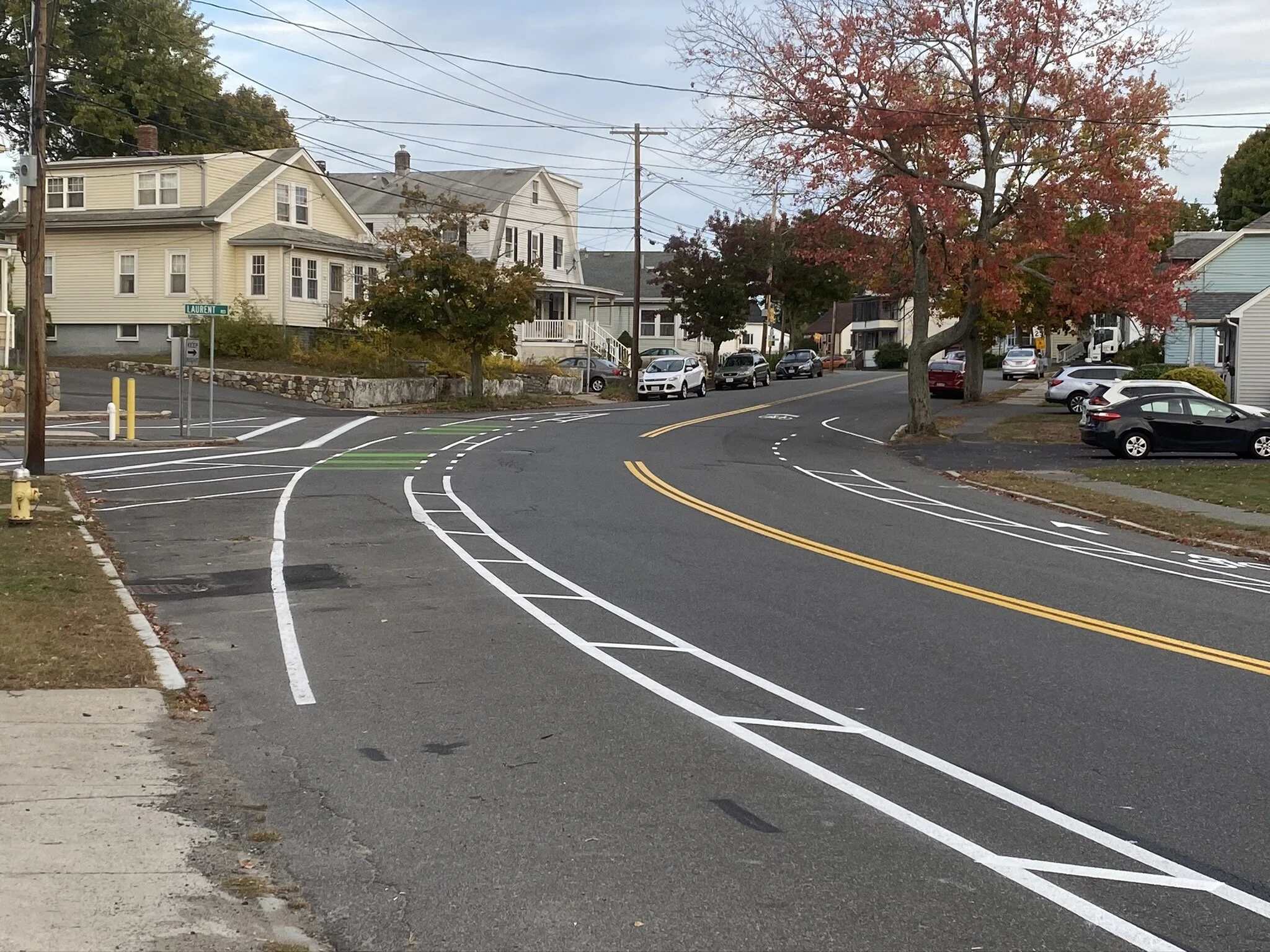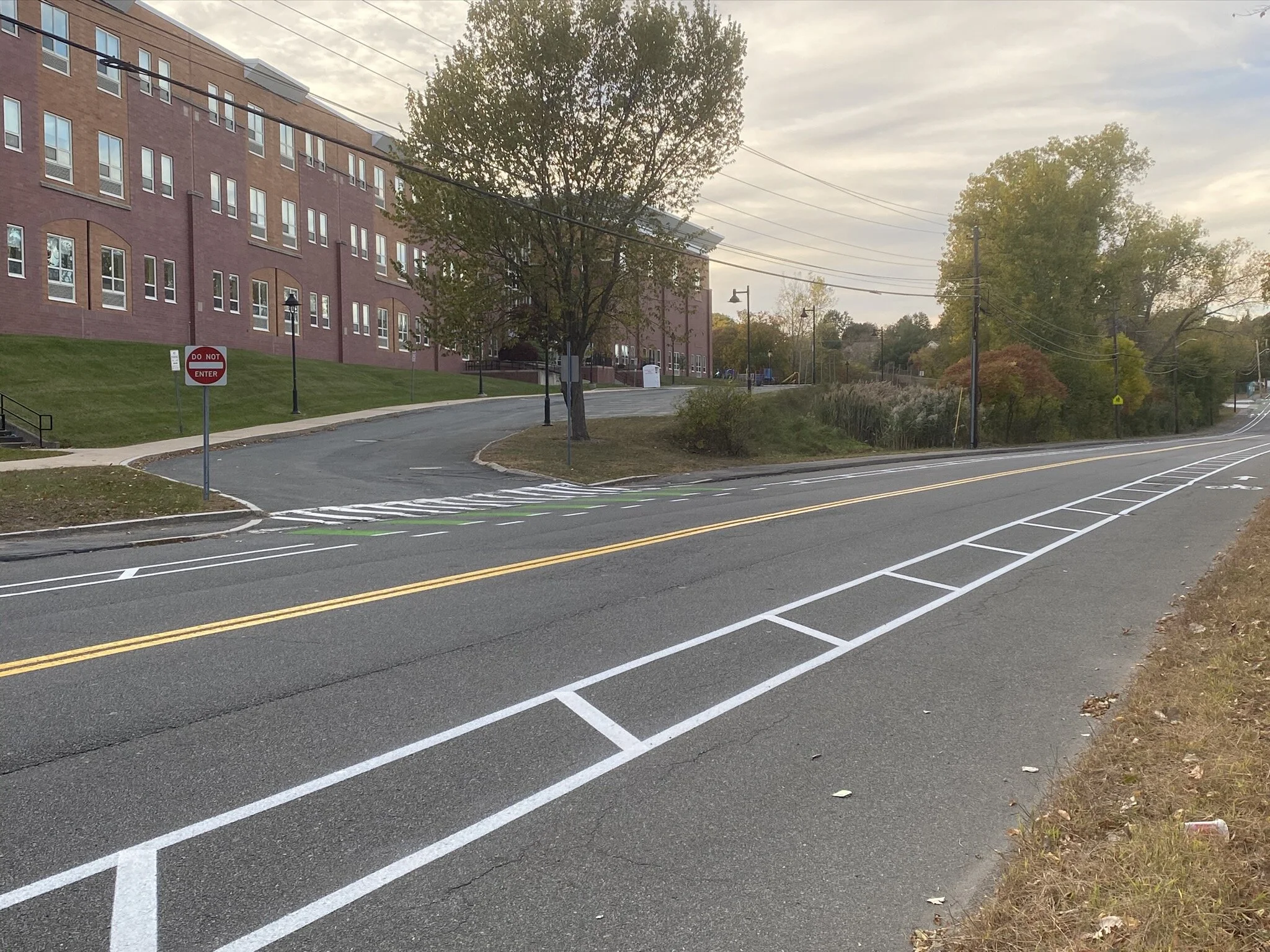Let’s Talk About Bike Lanes!
The city of Salem was recently awarded a grant from MassDOT to create a safer environment for bicyclists and pedestrians near Salem High School and the Horace Mann Laboratory School on Willson Street. The grant funded the design of bike lanes on both sides of the street from Highland Avenue to Laurent Road, along with more crosswalks, better signage and School Zone indications.
Whenever bike lanes are created in Salem, “conversations” on social media begin. Comments about bike lanes also make their way into other discussions about the direction of the city, the use of taxpayer money, the city’s priorities, etc. So, let’s talk about bike lanes.
High-speed lanes on highways are typically 12 feet wide, which supports speeds of 70 MPH. We are accustomed to driving at very high speed in lanes this size. City streets have historically been designed to have 10-foot wide lanes. This supports slower city speed limits. Years of driving in different environments, neighborhood streets and high-speed highways have trained our brains to respond to lane width.
The graph below shows the correlation between travel lane width and vehicle speeds:
Over the past decades, in response to issues of “safety” and throughput, cities have increased the width of roadways. This was an attempt to make the roads safer and decrease accidents. But, by increasing the width of traffic lanes, we have increased speed on our roads. Drivers don’t necessarily speed intentionally; they are responding to visual clues, like lane width.
Another clue that drivers notice is the physical layout of a road. Let’s look at Highland Avenue, and the metal guardrails found in the median. Where else do we find these types of barriers? On high speed roadways like the Massachusetts Turnpike. Our brains connect guardrails with speed.
Most of Highland Ave is 35 MPH, except for a short section between Marlborough Road and Walmart. Speeding is all too common on the road. If you travel at 35 or 40, you will be passed by just about every other car. The physical layout of the road results in speeding because of the visual cues. This is why the MassDOT Route 107 Corridor Study includes a change to a planted median, with trees and flowers, in order to slow things down and change the expectation of faster speeds.
Back to bike lanes. Let’s continue to use Willson Street as an example. You can see in the photo below that bike lanes in each direction, with an added barrier between the bike and the vehicle travel lane, easily fit on the road. In addition, as the road approaches Laurent Road, it widens even more and curves to the right going uphill. This has been the site of car accidents, near misses, and a lot of anxiety for residents. Drivers pick up speed as the road widens, but then find themselves in a significantly narrowed section of road as it approaches Jefferson Avenue.
Willson Street approaching Laurent Road, before the pylons were installed.
The grant work was originally written to end at the entrance to the golf course, but I asked that they extend the work to Laurent Road, to narrow down the travel lanes at this curve in the road. You can see the results in the photo. The driving lanes are narrowed down to an appropriate width, 11 feet, which have already shown improvements in driver, pedestrian and bicyclist safety.
Some have stated that we don’t need the bike lanes because no one ever uses them. There are two points to make here: 1. As we build more safe biking solutions in the city, more cyclists will utilize them. The goal is to provide a network of safe bike paths, some physically separated from traffic, some utilizing painted lanes to visually indicate space for bikes, and on calmer neighborhood streets, allowing cars and bikes to coexist. 2. Whether anyone uses the bike lanes or not, simply adding them to streets will narrow down the travel lanes and slow traffic, making our neighborhoods safer.
Willson Street at exit driveway in front of Horace Mann Laboratory School, before the pylons were installed.
On Willson Street, we have two schools, and when school is in session, there are students walking and riding their bikes. They deserve a safe route to school every day. Families should not have to depend on a bus or a car to get their children to school safely each day.
Neighbors on Willson Street were thrilled to learn that bike lanes would be created on the street, because they know first-hand the peril to pedestrians, bicyclists, and their property resulting from high speed traffic. We need to stop putting the convenience of drivers before the safety of our neighborhoods, pedestrians, and cyclists.
Next time you are driving on a road with marked bike lanes, take a minute to check your speed. Are you slowing down automatically? And on Highland Ave, look at your speedometer. Are you over the speed limit? Were you aware that you were increasing your speed? Awareness of how we automatically respond to visual and physical road characteristics will help you understand the importance of not only bike lanes, but other traffic calming improvements as well.




